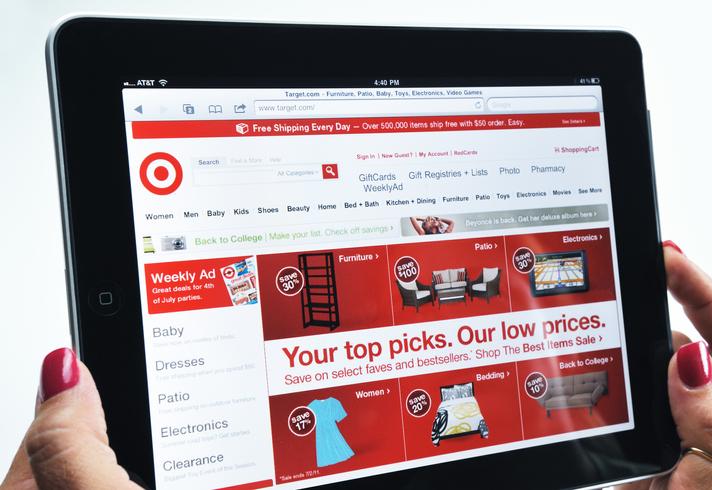Target Reveals Its Customers’ Shopping Habits Amid COVID-19
Target revealed details of shopping habits among its customers as the COVID-19 pandemic evolved throughout its ongoing first-quarter. The retailer also warned a number of factors will hurt its Q1 profits, despite comparable digital sales spiking by 275% in April.
While Target expects its short-term profitability to be affected by COVID-19, it also expects to “have the financial capacity to emerge from this crisis in a position of strength,” Target EVP and CFO Michael Fiddelke said in a statement.
“Having established an even stronger bond with our guests during this unprecedented time, we expect to have a compelling long-term opportunity to grow profitably and gain additional market share in the years ahead.”
Target also announced it will extend its $2 per hour temporary wage increase until May 30 and it will extend access to free back-up care for employees and a 30-day paid leave for employees who are 65 or older, pregnant or who have underlying medical conditions as defined by the CDC, through May 31. This follows a previously-announced $300 million investment in wages, bonuses, paid leave and benefits for frontline associates.
For the quarter, comparable sales are up more than 7%, balancing a slight decline in stores and over 100% digital growth. However, the retailer noted investments in pay and benefits to support employees during the COVID-19 crisis, a shift in category mix towards lower-margin categories, a shift to digital fulfillment, and inventory write-downs in apparel and accessories (the category dipped 20% in the quarter to date) will all impact Q1 profitability.
However, Target chairman and CEO Brian Cornell said in an interview with CNBC’s “Squawk Box,” that the company’s investments in online shopping options and its employees will lead to “market share gains that I think will benefit the brand for years to come.”
Target has staffed up its same-day services to accommodate increased demand amid the coronavirus and offers a contactless Drive Up service for online purchases across the country.
While Target noted a somewhat mixed fourth quarter, its same-day services soared by more than 90% in 2019 and were growing faster than shipping to home at the time. In 2019, order pickup grew almost 50% and its Drive Up service had accounted for a 750% spike in parking lot deliveries from 2018.
Merchandise Breakdown
March Comparable Sales
- +40% in both essentials and food & beverage
- +20% in hardlines
- Low single digit decline in home
- -30% in apparel & accessories
Month-to-Date April Comparable Sales
- +12% in both essentials and food & beverage
- +30% in hardlines
- Up in the high teens in home
- -40% in Apparel & Accessories
“Our strategy was built to be durable and sustainable in any environment and its strength is driving our business in the face of marked shifts in shopping behaviors caused by COVID-19,” Cornell said in a statement. “Because of our strong business model, we are able to make considerable investments to support our team, put protections in place, and adjust to serve our guests who are being advised to shelter in place and avoid stores. As a result, we are seeing record-setting digital growth, strong demand for our same-day fulfillment services and broad market-share gains across each of our core categories.”
Across core merchandise categories, comp sales in its first quarter to date have grown more than 20% in essentials and food & beverage, more than 16% in hardlines and up slightly in home, as shoppers react to the COVID-19 pandemic.
Target saw an increase in traffic and comp sales in both stores and digital in late February as consumers began stock-up shopping. Around the middle of March, there was an even stronger surge, while category mix became heavily concentrated in the essentials and food & beverage categories. But by late March, sales in stores softened significantly, while digital sales spiked as consumers began to shelter in place.
Cornell told CNBC he expects some of customers’ new habits to stick, as they discover the ease of driving up and having Target employees put purchases in their trunk or having a shopper from Shipt drop bags of groceries at their door. He also said he expects customers will continue consolidate their shopping into fewer trips.
“I certainly think that going forward, for the foreseeable future, consumers are going to take advantage of that one-stop shop,” he told CNBC.




